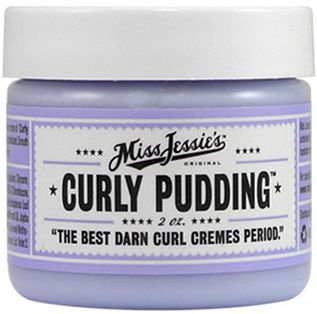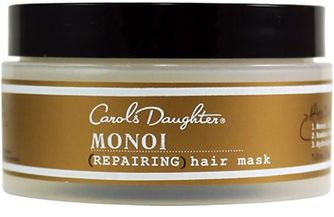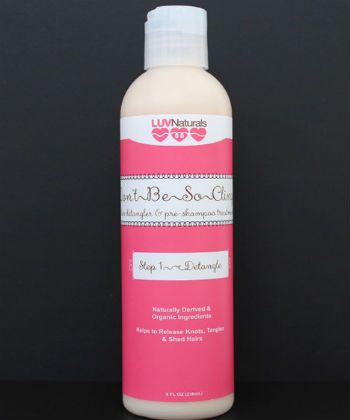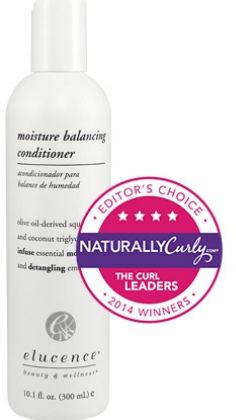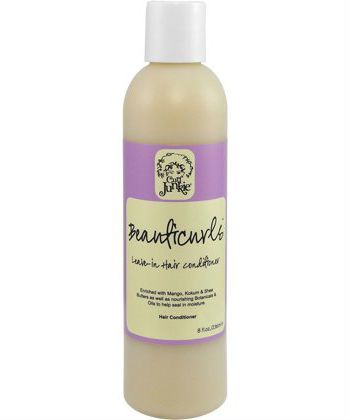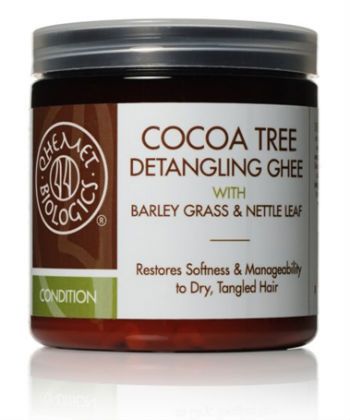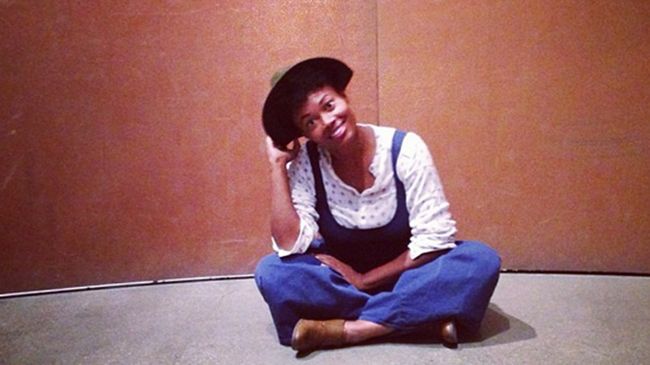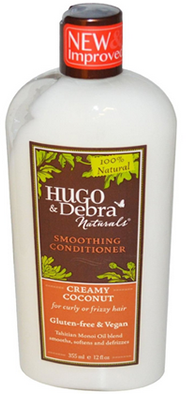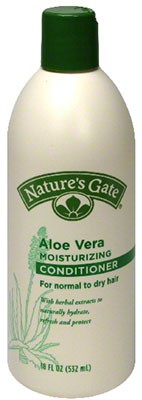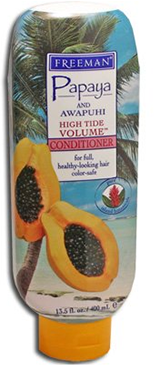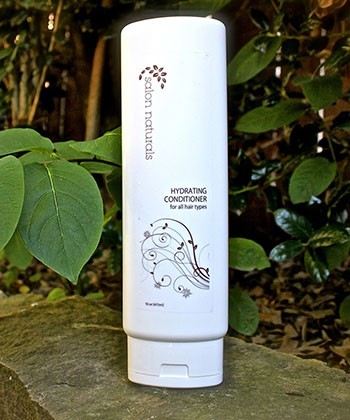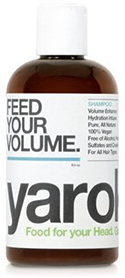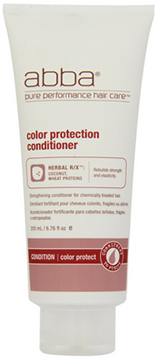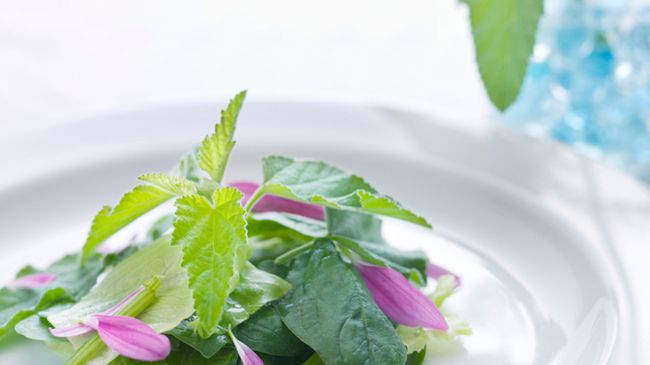Search Results: Sabrina Perkins

Well, with the new wave of love for the curly girls, Fredrica Antwi, Founder and CEO of Locks of Curls, came up with the idea for curly girls to try new and exciting products without breaking the bank. We caught up with her (she’s super busy being a senior at University of Maryland and a CEO!”> to find out more about her service and her hair.
Can you briefly describe how Locks of Curls works for the subscriber?
Locks of Curls is a customized subscription service of hair styling products designed for people with naturally curly hair.
When the customer first signs up for the subscription, they fill out a customer hair profile which allows them to input characteristics of their hair, such as curl pattern, hair length, and typical issues they face with their hair. This allows us to create a custom box of hair products recommended just for that customer.
What prompted you to start?
When I first went natural, I would spend several hours a week trying to figure out what products would work for my hair. I would spend so much money purchasing products, but at the end of the day, they would end up in a cabinet somewhere unfinished.
I wanted to come up with an exciting way for people to experiment with hair products without having to shell out too much money, while also being able to find the products that worked for their hair.
How does your education in accounting and finance figure into your business?
With a background in accounting and finance, planning a budget and figuring out revenue and expenses came easily to me. I was able to figure out the ideal price point to cover my expenses and receive a profit. In general, being in the business school has allowed me to think logically and rationally when it comes to the logistics of Locks of Curls.
What brand names are featured in the subscription?
Currently we have samples from Mixed Chicks, Oyin Handmade, and are awaiting shipments from a few other companies. We are currently looking for more suppliers, from large companies to startups. We strive to help the customer find the best products and help the suppliers get their name out there.
What do you think are the biggest benefits to the subscribers?
By using Locks of Curls the customer is receiving products that we recommend especially for them. We analyze their answers in the Customer Hair Profile to make sure they’re receiving products that we believe will work best for their hair. Men and women have different hair characteristics and hair needs and we desire to cater to those needs.
We will also be selling monthly subscriptions in which the customer can get full-sizes of their favorite products from the sampling subscription sent to their home on a set schedule.
What makes your subscription service different and unique from other services?
Unlike other subscriptions, Locks of Curls is centered around the customer’s unique needs, which is why we have a Customer Hair Profile. We want to make sure the customer is getting a unique and fun experience from using our product.
Where would you like to see Locks of Curls go in five years?
In five years I would like to see Locks of Curls opening a storefront and salon in which customers can get their hair done as well as sign up for the Locks of Curls monthly box. The customers will then be able to address their hair needs on a consistent basis as well as continue to have a healthy hair journey.
Tell us about your hair journey and hair regimen!
I first inadvertently went natural in winter 2011 after using weaves as a protective style. Since I went from weave to weave, I did not bother relaxing my hair. I soon realized that my hair was growing and in August 2012 I stopped relaxing then big chopped in January 2013. Since then, I’ve had setbacks especially dealing with figuring out what my hair needed and understanding my curls. I protective style with wigs and braids quite often and make sure that I don’t use products high in sulfates, parabens, and petrolatum. I love being a naturalista!
Check out Locks of Curls here:
Yikes! I’m super late to class and it’s only the first week of college! I heard my professor precisely locks the door at 8 am and I refuse to get dropped from my English class. I’ve got fifteen minutes to make it to class on time and not get embarrassed. That means 3 min to brush my teeth and throw water on my face, 2 min to dress, 5 min to do something with my hair, and 5 min to scurry through first-year freshmen with maps. Wait a minute…five minutes to do my hair? The same hair I haphazardly slept on because I was too tired to do anything thing with? Yes, it’s time for a hot bun without looking like a hot mess.
Late to Class? 5 Quick Top Knots
It is rare that all hair routines will actually well work forever, and that is because anything is susceptible to change. Our lives are forever changing and there are certain factors that will continue to alter your plans and practices when you least expect it. Some of the most famous ones are pregnancy, hormones, aging, health, environment, job, and chemical treatments. All of the above can wreak havoc on your tresses at any given time, so if you are so busy rocking the hottest wash and go and for an unknown reason you wake up with a wash and won’t, you may want to take heed.
Wash and Go Triage
First off, if you have been working on your wash and go because it doesn’t have its glory anymore, something may be wrong. It could be that you need a haircut because of heat damage. It could be you need to incorporate protein treatments, deep conditioning after every wash day, or try the baggy method to restore your moisture.
That same product may not be working as well as before (they may have changed the formula!”> or you may have to consider switching up brands or products (e.g. switching from butters to moisturizers”> if the changes are occurring as you embark into a different season. Dryer months need different products than the more humid ones, so figuring out what’s wrong may just require changes in your products or routines to rejuvenate your amazing wash and go.
Try a Different Variation of a Wash and Go
No one says you have to rock the same wash and go. A wash and go can vary from each person or climate. You may have to alter the products or the technique on how to get your wash and go back to stellar shape. If your hair has gotten longer you may have to pineapple to achieve a better second or third day out of your wash and go.
If you have a Deva Cut and its growing out, you may find problems with your style as it loses its shape. If you don’t want to cut it then you have to improvise and either switch up your part or pin up a side (or your bangs”> to give the illusion of the same cut while it grows out.
Give protective styles a try
A true wash and goer would never resort to protective styling just because her hair was acting up. It’s ok to admit defeat or try other styles while your hair is in a rut. Try Marley twists, box braids, twists, or the thousands of others styles that protect your hair and give you a different aesthetic. This may turn into a seasonal change if you can’t or don’t want to your wash and go during winter.
Get creative with the scissors
It might be time for a style change. A Deva Cut that will make your wash and go look much better. Your curls will fall and expand better. Check out our MyDevaCurl Curly Stylist Finder for the best curly cutters in your area.
Roll with the punches
If all else fails, rock it right and rock it hard. Do you and that means you wear your wash and go as you see fit. Got more frizz? Accept it and use it as volume! Some sides curl tighter than the other sides? Put more product on the less curly side, scrunch, and keep it moving. Wear it and be proud. It’s your hair and it’s beautiful no matter what.
What part of your routine seem to stop working? What did you do differently?
There have been women styling hair without a license for years! It’s nothing new and as many women read this nodding in agreement while reflecting on their childhood (or yesterday”> when someone braided, pressed, permed, or colored their hair at home. Some would say it’s a rite of passage while others would say it’s risky because the price might be right, but the repercussions could be irreversible.
I have a background in government regulation. I worked for state regulation and licensing for almost six years, so I’ve seen the downside to occupations or professions not having licensing. People are physically, financially, and emotionally scarred by individuals who are not required to be regulated by a governing body. As a result, we are seeing more regulation on different professions because of the harm they can impose if not properly educated or monitored.
Now, I’m taking off my regulating hat to be that entrepreneur who is trying to make an honest living from a talent I possess and the services I can offer to the public. If I were a hair braider, would I expect to be licensed by a governing body so they can ensure I don’t harm the public with my skills? Yes, with a big asterisk. Let the requirements fit the profession.
There have been some rumblings, as seen in Institute for Justice: Untangling Regulations, NPR, and Huff Post, from hair braiders and civil rights organizations about the national report that showed how many states (around 34″> have severely restrictive braiding laws that are requiring thousands of hours and dollars necessary to obtain licenses. Excessive? Yes! Many of those states are requiring hair braiders to obtain cosmetology licenses when all cosmetology institution do not give extensive training on braiding. It’s comparative to electricians getting plumbing licenses. They are both identified as trades that are in the construction sector but one does not have anything to do with the other.
“On June 17, 2014, the Institute for Justice (IJ”> launched its national Braiding Initiative by filing lawsuits challenging onerous and anti-competitive hair braiding regulations…Research demonstrates that occupational licensing laws, such as those governing hair braiding, create artificial and unnecessary barriers to entry for entrepreneurs seeking to take their first step on the economic ladder.” –Braiding Initiative
Each state has a right to govern various occupations to their standards, and oftentimes states tend to mirror other states, but when it comes to hair braiding, the states are all over the map (pun intended”>. According to Braiding Freedom, Iowa, Nebraska, and South Dakota require hair braiders to obtain a license through 2,100 hours of training, whereas, South Carolina requires only six hours and Mississippi only requires a ‘self-test’. There needs to be a fair and logical middle-ground, and although my thoughts on the matter are far from favored in this fight for a right to go into a trade and regulate, I do see the problem of overly strict and improper regulations.
Hair braiders are not cosmetologists, but they should know and understand the hair they braid as well as proper cleaning techniques in their shops. I know for a fact that some hair braiding shops are less than stellar with their cleanliness, and without proper regulation someone could become sick and have no governing body to report to for relief or restitution.
I’m all over the place on this issue and I know it’s because I am an entrepreneur who has received braiding services and worked in government regulation. This issue is not as simple as black or white nor is it anywhere near being fixed. Whether we have over-regulation or too-little regulation, the problem to me stems from the lack of the governing body to learn about the trade in order to properly regulate it according to its own standards and not the standards of other professions. They are not cosmetologists, but they are professionals and they do need to be licensed but with proper standards that are appropriate to the service they provide. Inspect shops, teach proper sanitary measures, and allow them to thrive financially without placing onerous regulations on their profession.
Perhaps once the strict and unreasonable regulations are removed we can finally have that conversation about regulations that fit the profession and keep the consumers safe.
What say you? Should hair braiders be regulated?
Locs don’t have to be mysterious and they don’t have to be hard to understand and wear. If you are interested in learning more about them as well as how to care for them, then you need to subscribe to these ten YouTubers who share everything about locs.
We all have our favorites: a favorite movie, celebrity, perfume, and even hair product. If we’re lucky our favorite hair product is easily accessible as well as affordable, but in many cases it is not. Now, you will never get me to admit that pricier brands are always better, but I think we all have a few favorites that seem to be out of our wallet’s comfort zone from time to time. It’s ok to be frugal most of the time and it’s definitely ok to splurge every now and again! When I do get the chance to spend more for my hair products, I have five I cannot seem to get enough of.
Detangling curly hair takes time, skill and patience to do correctly. With the right product, you make the task a much more manageable one. Natural, coily or curly hair does not have to mean difficulty or stress when you have the right techniques and products to make your routines more efficient.
Top 30 Sulfate-Free Shampoos
OK, let’s get to the important part…
Tangles can cause your wash and go experience to be less inviting and more work than you bargained for if you don’t properly prepare and purposefully pick positive approaches.
DO co-wash over shampoo-wash
Co-washing was made for the wash and go divas. Granted, it’s great or needed for most curly girls to keep your hair properly hydrated and keeping the tangles at bay. The bottom line is shampoos do their job and they do it well…well, too well actually. They remove the dirt, toxins, and product buildup while also removing the natural oils we need in our strands to keep the elasticity so they don’t break. Shampoo will also get your hair squeaky clean and rough, and my hair tends to tangle more in that state. There is no lubrication, if you will.
Co-washing cleanses the hair but since it has conditioner as the base it’s more soothing to the strands and allows better manageability. More oils are left (or added”> and they are great for removing tangles like a boss.
DO be generous with the conditioner
Conditioner is your friend! Slather it on, be heavy-handed, and make that bottle your own! It’s time to be sloppy, messy, down-right silly with the conditioner as it will make detangling a breeze by allowing the knots to slide out with ease. The goal is to coat each strand of hair have a generous amount of conditioner so that they are less apt to break or tangle.
DO protect your hair at night
This should be done for whatever style you are rocking but for the wash and go, it’s imperative to keep that hair protected for the following reasons:
- It keeps your coils, curls, and waves from crushing, matting, or molding out of shape by the sheets or pillows.
- It will help in getting second or even third day hair.
- It keeps the tangles a bay. You will probably need more than just a satin bonnet in order for the style to lasts. Many curlies will also pineapple their hair or wear a low ponytail to stretch and secure your hair in place. Test a few ways out to see which yield better results for a 2nd or 3rd wash and go day.
DON’T disturb the curl when wet
A no-brainer or at least it should be but the more manipulation added to your wet hair the more it will frizz and the more tangles you can incur. Leave it be it until it’s at least 80% dry so the curl is not disturbed and tangles will be minimal. The more manipulation causes more tangles.
I find certain hairstyles are more suited for certain ages and as a child develops, so does her personality and style preference. With age comes maturity, along with the opportunity to claim her beauty as she evolves into a young lady. What does that all mean? Well, the older she gets the more her personal style changes.
At certain ages it’s not solely about how cute they look or how mature they look, but how much maintenance a style requires. Generally, the ages will determine how willing and able she is to maintain those styles and as parents, we need to ensure they learn the responsibility of caring for their hair.
Ages 0-5
- Go for the cuteness! Afro puffs, ponytails, and individual braids.
- I love that look on toddlers, if they have enough hair. This is the only time they will allow you to dress them up so go for it and the more colored ribbons the better.
- When is comes to twists or braid extensions for little girls over 2, they should be shoulder length or a little past. Any longer would be too much.
- If very young and without much hair, place a gorgeous lacy headband or a cute beanie on your head if she allows that, as many will pull it off.
Ages 5-9
- Here she is coming into her own and may try to dress herself, as well as choose her hairstyles.
- She’s in school now and she may gravitate toward like longer braids (mid-back”> or a low ponytail. She may want the afro puff without the barrettes.
- She’s in grade school for goodness sake! Curlformers, straw sets, and wearing it loose would be great for special occasions.
- Straight styles will probably be few and far between since she’s probably not up for the daily maintenance.
Ages 10-12
- Here she wants to longer braids and wear loose hairstyles more frequently.
- She’s probably doing her own hair (or at least trying to”> and her independence is showing through her choices of friends, fashion, and hair.
- She may want to add some color to her hair so hair chalk is fun and not permanent.
- She’s probably sporting more straw-sets, curlformers, twist outs, and bantu knots.
- She’s even ready for the straighter styles so her hair can hang and not succumb to shrinkage. She’s ready to start taking care of her hair.
Ages 13-15
- It’s pretty much open season on hairstyles and letting her personality shine through with straight styles, curlformers, straw-sets, twist outs, bantu knots, and the whole nine yards. If she wants extensions and is willing to care for them, I think adding extensions should only be braids and clip-ins.
- Color should still be either hair chalk or even a rinse for semi-permanent fun and nothing as bold as blonde.
- It may seem like the wild cuts are too much so if she is dying for the mohawk let her try the frohawk. She can be stylish without permanent upkeep.
Ages 16 and up
- Here she may want to explore permanent color and full-blown weaves if she and her mother so desire. She’s old enough to take care of her hair and keep it up, as many styles require daily and nightly maintenance.
- She can sport all the hairstyles out there and even cutting to cute trendy styles like an asymmetrical bob or even a fade if she so desires.
- Now it’s time for the mohawk, fade look…whatever to give her the individuality she craves.
To sum it up
This is just a guide of suggestions, not a rule book. Experimenting with various hairstyles is a great way to allow your child to grow into their own, but at a pace they can learn the good practices for the upkeep for healthy, happy hair. If they have high manipulation, detailed hairstyles before they can truly appreciate and care for them, then you are asking for trouble with heat damage, breakage, and long-term bad hair habits.
What hairstyle do you think are appropriate for children?
Bangs are cute, sassy, and even flirty, but when they start to grow out we tend to have styling dilemmas. They don’t fall well, they don’t look the same, they are all over my face, and they make me sick! Now, don’t get all chop happy, especially if you have decided to grow them out. Stay the course and know there are ways to make them look either amazing, or out of the way so you get the desired style and look you are going for. Check out these four ways to style your natural hair bangs.
4 Styles to Grow Out Your Bangs
Numa’s focus is on exploring themes of identity, feminism, female sexuality, and untraditional family dynamics. It was so great to get the chance to find out a little more about this amazing and talented woman.
Tell me a little bit about yourself. How did you get started?
I’ve been writing and acting since I was a little girl 6, 7, 8 years old. It’s always been my life path. I started to explore photography in my early 20’s and developed into a visual artist at that time. Now with my company Black&Sexy TV all of those things roll into one.
You have received a lot of support with Kickstarter campaigns. How did you come up with that idea?
I’ve been watching and supporting other Kickstarter projects for a few years now. We really took our time to build an audience before we launched our first one. So the idea was born from seeing others succeed as well as fail at it. We studied and learned from each along the way – including our own.
YouTube has revolutionized television programming. What has it been like to be a part of this movement?
It’s very empowering and exciting. Any idea we have I feel 100% confident that we can produce and have an audience there to respond to it. That’s what every performer, writer, and artist wants, a platform to communicate what they are trying to express.
What advice can you offer aspiring producers?
Learn by doing. Be patient and at the same time develop a reputation for keeping your word. When you can’t keep your word due to production “issues” develop a reputation for making it go right.
Who are your role models?
Lucille Ball. She’s one of the earliest producers, comediennes, and stars all around. I want to create timeless work like hers that defies racial barriers. She broke through a lot of glass ceilings.
What accomplishment are you most proud of to date?
- Growing Black&Sexy TV from the ground up
- Working with HBO to develop my web series The Couple
- Black and sexy has a great deal of programming
Let’s talk hair: What is your regimen?
I’m very low-key maintenance because I do not enjoy doing my hair. I do not enjoy doing my makeup either. Day to day I only wear mascara and light gloss or fun colored lipstick if I’m going out. For my hair I prefer a soft slightly messy look most days. When I need something more put together, I have a great hairstylist who I have trusted for five years with my hair. She does all of my cuts, rod sets, and will press my hair when I want a straight look for something. She is great. In between my appointments with her or if she is unavailable I co-wash my hair. If it’s feeling extra dry I will do a longer conditioning treatment, but I don’t do this often, maybe 4-5 times a year. Then, I twist my damp hair into Bantu knots and take it out the next day. I use olive oil leave-in conditioner when I remove the knots and if I want more volume I will diffuse the roots. The best days are when it’s the second day of my twist out and I don’t have to do anything but pin it if I want to and keep it moving.
Has your hair affected your work in your field?
I’ve been asked to straighten or “tame” my hair for roles. There are also many times I have booked roles partially because the director or casting agents loved my hair. I stay flexible with it. I understand certain roles require different looks. Because of what I do with Black&Sexy TV I feel much less pressure.
What inspired BlackandSexy TV?
It all started with the film A Good Day to be Black and Sexy. I photographed the movie poster and that was my first creative collaboration with Director Dennis Dortch. Dennis then wanted to create YouTube videos to promote the theatrical and DVD release of the film. That then expanded into the first Black&Sexy skits which I helped to produce and cast. During this process I started to have a vision for Black&Sexy becoming a network with serialized content. Dennis shared this vision and agreed that we should move into doing episodic work as well. Next thing you know we were developing some of those skits into series and Jeanine Daniels came up with The Couple. There’s more details to how we continued to grow, but that’s the nucleus of how it started. Dennis’ long time collaborator and Director of Photography Brian Ali Harding was filming everything and making sure the aesthetics throughout were signature. Together we all made a great team and are still growing the company together. We are all inspired by making a difference and changing the landscape.
I noticed that a lot of the women that are casted have natural hair. Is this intentional or just a result of vast women accepting their natural hair, including actresses?
It’s largely intentional. First of all natural hair is so diverse and that it keeps us having the most interesting and beautiful women. Seeing women respond to casting notices and they basically all have the same type of wig or weave in is so boring. We want to be intrigued by what we look at and have it reflect our culture in a way that’s often put to the side or not celebrated. We don’t have a mandate though. We have actresses that wear their hair straight as their characters or in their real life – or wear weaves that are straight – or more of a naturally curly or kinky texture. We have variety is the point. A true variety of beauty and intriguing looking women, and men I might add.
How do you care for Rockwelle’s hair?
Oh I’m terrible. I hate to see her cry or even say ouch. I co-wash her hair just like I do mine and I’ll twist it into Bantu knots from time to time to help with the tangles. In the morning I spray it with Curly Q’s La La Meringue Curl Moisturizer and I finger comb it. She mostly wears a little ‘fro every day. Occasionally I will brush it up into a top knot or pin the sides with bobby pins to give her a slight frohawk look. I use the olive oil leave-in conditioner on her hair when I can get her to sit still and let me moisturize it throughout. Her hair is in no way perfect every day. I’m not that kind of mom. It’s very low key and she’s 3. Her hair is very healthy, strong, and 100% natural though so I am very proud of that.
Give us a day in your life. What is your typical day from morning to night? Any rituals?
I wake up every morning around 6 am. I’m the first one to wake. My daughter gets up around 7:30 am and my man works well past midnight most nights so he sleeps until around 7 am. That first hour I just breathe and sometimes will take a moment to visualize something I look forward to happening. I try to focus on being happy and thankful, even if it’s for just a moment when I wake because I know it’s important to set a tone for my day. All of this thought process happens right away and then I’m on my phone scrolling Instagram and Twitter, reading business articles online, and forwarding relevant ones to my partners. Then, my daughter wakes up and we cuddle in bed for a while. This is a highlight of the day. Then, it’s time to get up and get going. If I’m in workout mode however, I wake up put my running shoes on, and get out of the door before I can talk myself out of it. Then, I do my visualizations while I move my butt.
This is really good for me because I clear my head when I’m outside alone like that. I should do that more often! The rest of the day is always in one form of production either writing or prep for a shoot or we are shooting. I’m also working on acting roles and art projects at the same time. I do my best to get something definitively accomplished before my daughter gets home from preschool. Dinner time is family time and nighttime is another segment of the day to squeeze some work in for the many projects we are doing. By 11 pm I’m pretty tired and gotta get my beauty sleep going. I’m not a woman who has a nightly beauty ritual. I just keep my face clean. I do sleep on a satin pillowcase because I don’t like wrapping my hair at night. It’s not very sexy ya know? I will do it if I really need to protect a specific style but otherwise it’s me and my satin pillowcase – hair free for play.
Follow BlackandSexy TV and Numa here:
For many curlies and coiles, cleansing your hair, especially if using shampoo and even more so if using a shampoo with sulfates, can be harsh to your strands if they are not properly lubricated before the process and not properly conditioned afterwards. The shampoo does its job by stripping all the dirt, toxins, and product buildup, which is essential to maintaining healthy hair, but it also strips the natural oils that your hair needs. The purpose of the pre-poo is to condition the cuticle for manipulation and prevent stripping during the cleansing process.
Even if you are an avid co-washer (such as myself”>, it truly doesn’t hurt to periodically incorporate pre-poo’s, especially when it’s time to use a clarifying shampoo. Cleansing is essential to a regimen but so is sustaining moisture. A pre-poo treatment is oftentimes an oil but you can use a conditioner, a humectant like honey, or a DIY mixture.
Caring for our hair is not always about long drawn-out techniques that are time consuming. We should spend more time enjoying our hair than maintaining it. It’s also about getting the needs met and finding ways to incorporate them into our daily routine so your life runs smoothly. Still sounds like too much work? Check out these simple pre-poo methods.
1. Overnight
Yes, the best way to get that pre-poo to work is apply it the night before your washday. It’s called beauty sleep for a reason! Allow your treatment to work while you sleep. Simply applying it, put your hair in chunky twist or Bantu knots to prevent matting, cover with a plastic cap, and then cover the plastic cap with a scarf or satin bonnet. The plastic cap will enclose the heat generated from your own head to help open your hair shaft, which is even better! If the plastic cap it just too much, then just add a scarf and a bonnet so the oils do not seep onto your pillowcase or sheets.
2. Head wraps
Naturals love head wraps, so make a bold fashion statement while treating your tresses. It’s a great way to kill two birds with one stone. Look stunning and condition your hair. This can also be an option while you exercise. Don’t have time to for long detangling sessions? Pre-poo while you workout.
3. Hooded dryer
Don’t have tons of time? Get under the hooded dryer with a plastic cap to get better benefits of the treatment and in a shorter amount of time. 15-20 min is all you need and you are ready for the cleansing.
4. Masque la pre-poo
Spice it up with a your favorite masque to get the mega moisture before cleansing. Great products like SheaMoisture Deep Treatment Masque are versatile so let your imagination run wild and never feel you have to do like everyone else. Deep treatments are great before or after cleansing.
5. Don’t forget your roots
Always completely saturate your roots to keep them moisturized and healthy. Nothing is worse than breakage, and snapping at the roots is even worse! Slather, saturate, smooth to get them covered. This is too important to leave out or skimp on for even one pre-poo. We talk about our ends so much that we neglect our roots at times, but they are essential to a healthy scalp and hair.
Watch this DIY Olive Oil Pre-Poo
Oftentimes we come into contact with things that will inflame, irritate, or cause acne like food, detergents, and even the products we may use on our bodies. It doesn’t have to even be products that are specifically for your face. Many women may find that the products they use on their hair will cause acne after their hair comes into contact with their skin. Before you know it, you are seeing those ugly pimples on your forehead, cheeks, hairline, and back.
“Dermatologist Doris J. Day, M.D., author of 100 Questions & Answers about Acne, notes that ‘pomade acne’ — caused by pore-clogging hair products — first became a problem in the 1970s. During this time, hair oils and creams were commonly used for certain hairstyles, like the afro. These products often caused acne breakouts on the forehead, temple and hairline.” – Skincare-news.com
You don’t have to compromise your beautiful skin for fabulous hair. Here are preventive measures to prevent acne breakouts before they happen.
Exfoliate on your washday
Weekly exfoliation is good for your skin anyways so you might as well designate it for washday in order to get rid of dead skin cells, oil, products that clog your pores. You can also exfoliate your scalp too, and there are tons of DIY recipes for both. No need for pricey brands, check out this DIY Brown Sugar Scrub.
Avoid petroleum, mineral oil, and lanolin
These ingredients are too thick and can clog your pores. They can also cause acne to develop on your scalp or just aggravate acne on your face or other parts of your body.
Change your pillowcase regularly
Oil, dead skin cells, and bacteria get trapped in the pillowcase while you sleep. If there are oils or products in your hair that may aggravate your face, it can transfer to your pillowcase and then onto your face, back, and shoulders. Try and buy a couple of satin pillowcases so you can swap them out more often.
Tie your hair up at night
Another thing to note is whether or not you tie your hair up at night. Although a satin pillowcase is a great alternative to a cotton pillowcase, your hair is coming into contact with your face as you toss and turn while you sleep. You may want to start using a satin scarf and/or satin bonnet to keep your hair out of your face at night.
Wash your hands
This is important after you apply product to your hair or whenever you touch your hair. You don’t want to transfer the oils and product to your face and irritate your skin.
Wash your face every night
Even if you don’t wear makeup this step is essential. Oil, hair products, and debris from the air can clog your pores while you sleep.
Wash your body after rinsing and plop
If you wash your hair in the shower, finish cleansing your hair before you wash your body. By rinsing your conditioner and applying your moisturizer after you have washed your body you are forgetting the product that is dripping onto your body before you step out the shower. Simply wrap your hair in a t-shirt before washing your body in order to prevent product from dripping.
Avoid styling products before exercising
You may want to forgo the styling products on your workout days, as the sweat from your hair will drip onto your face and cause irritation. If you can’t help it, then use a headband to capture the sweat and keep it off your face.
Although more companies are formulating products with less harmful ingredients, what is meant for your hair is not always good for your skin. The best way to keep the acne at bay is to drink lots of water, establish healthy eating habits, don’t touch your face, keep your skin clean, and know what’s in your hair products.
This article was updated on Jan. 12, 2016 for accuracy.
How has your skin reacted to your curly hair products? How do you prevent breakouts?
We are not all alike. Simple. Understandable. True.
We ARE however similar in our hair’s needs and problems. One similar trait we naturals face are tangles and finding productive ways to work through them. I say work through them and not fight them or destroy them because it gives a negative outlook on this phenomenon our hair tends to live in if we neglect it or we wear certain styles. It’s our hair’s natural tendency to tangle. Curly, coily, wavy hair will tangle and unless you want to be yanking out hairs fighting through it, you will need to take a more positive attitude towards it.
There are a few ways to work through your hair’s tangles from tools to techniques and while everyone has their favorite tool of the trade some are still scratching their heads not sure which direction to take. It’s confusing, to say the least, because just about any path you choose for removing tangles may end in in over-manipulation or the opposite and matting of the hair. Your methods must be effective and non-damaging. In other words, find a happy medium.
Finger-combing or finger-detangling is the cheapest way possible to work on your tangles. First off, you never have to find your tool, they are free and they can feel the hair and tangles so you can stop prior to yanking out a knots. Great, huh? Well–yes and no. They have some drawbacks despite how many naturals praise them. Hey, I love them and only detangle with my fingers but I know it’s not for everybody and they can sometimes be ineffective.
1. If not done well, it can cause dreading
No one needs that in their life unless they are trying to grow dreads. If you are prone to your hair knotting up quickly then this might not be the method for you. You want to be effective but gentle. Not doing it correctly is as ineffectual as petting your hair for a detangling method. It won’t get the job done so it must be done right. Learning how to effectively finger-comb or finger-detangle takes time to master and the problems that can occur if not done properly can cause matting, dreading, or severe knots if left unattended.
2. It’s time-consuming
It is extremely time-consuming! You have to feel every section to find the shed hairs and remove them and find the knots and remove them too. If you have long hair or extremely thick hair this will take time. I think Kimmaytube says it takes her about two hours to detangle her hair and if you don’t have that kind of time you may want to ditch this method.
3. It’s more detangling and less actual combing
If your end result is to comb your hair then this isn’t the method for you. You may like the look or curl definition your wide tooth comb may give you and fingers will not give the same look as a comb will. Many of us don’t want to disturb the curl but if that’s your desire then you may need to just get the comb.
4. Not the most effective way to remove shed hairs
Besides be the slowest way to detangle it’s also the least effective way to remove shed hairs. A comb or even a brush has those on lock as getting shed hairs and removing them with minimal ease and even if you feel you detangled like a boss with your fingers I guarantee you, there are still some hidden in there just waiting to tangle or dread.
5. Neglect causes madness
If your game plan is to detangle then it must be done regularly and only you can determine how often that must be according to your hair’s needs. If you hair will mat up in a matter of days or even hours (like a friend of mine”> then neglecting detangling and then doing it with your fingers will be long and tedious and if you are impatient you will be yanking out hair instead of properly remove the tangles.
Watch the videos
Kinky Natural Hair Wash Routine| Detangle and Moisturize
3 Ways To Safely Finger Detangle + Remove Knots on Curly Natural Hair – Naptural85
An alternative to stylists who prefer to or primarily style straight hair are the curly salons that are chopping into your hair using carving and slicing techniques that are supposed to debulk or thin out your hair. These high-priced techniques end up deforming the actual curl structure and make your ends frizzy and ripped. You end up with fishhook strands and it grows out horrible! This is the main reason many natural, curlies, and wavies have begun doing their own trims and cuts, and although we do a great job, it’s nothing like going to a professional and getting the royal treatment and the perfect cut. If you are dying for a new style and have no clue what to do, then you may want to give the Deva Cut a try.
The Deva Cut was created by the Devachan Salon and is a special technique for cutting curly, wavy or coily hair. The cut is more about making each curl look its best and not just a way to “tame” the curls. The cut is created on dry hair so the stylist sees how each curl will fall and each individual curl is shaped. You determined your style after your consultation with your stylist before the cutting process. Don’t fret if you aren’t in NYC where the Devachan Salon is because you can find salons and the Deva Cut at throughout the US through My Deva Curl. If you want to read reviews of certain stylists and salons from other curlies, you can use our Salon Finder.
The cut is primarily for women who have a some sort of curl definition and wear wash and go’s
Women seeking to have a Deva Cut are strongly advised to consider the fact that the cut is primarily for women who have a some sort of curl definition and wear wash and go’s. Because the average curly has more than one texture, cutting the hair in a dry, wash and go state allows the stylist to see how the various textures naturally fall and mold the desired shape from there. If you frequently wear your hair in stretched styles (e.g. twist outs, braid out, flat iron”>, then this method may not be the best option because there is a likelihood that your shape will be uneven in a stretched state. If you are a wash and go curly or coily, then straightening before cutting may not be the best option because when the hair shrinks, the integrity of the shape may be compromised.
If you feel that a Deva Cut is not for Type 4 hair, this is simply not true for all Type 4 textures. Chary Jay recently shared her Wash and Go Perfected salon experience where a stylist defined her Type 4 or Z-pattern texture.
If you are newly natural or new to being a wash and go curly or natural, I highly suggest mastering your technique prior to receiving a Deva Cut. For some people, wash and go’s are not literally wash and go’s, so mastering the technique to where you are satisfied with the results is a great base prior to receiving a cut.
Below you can witness how attentive and knowledgeable stylist Dianne Nola is while cutting our very own Junior Content Editor Devri has her hair cut by Dianne Nola.
Are you considering a Deva Cut? Have you received a Deva Cut? What was your experience?
Vegan foods are quickly become an easily accessible genre and we can see the health benefits of the lifestyle. “Veganism is a type of vegetarian diet that excludes meat, eggs, dairy products and all other animal-derived ingredients. Many vegans also do not eat foods that are processed using animal products, such as refined white sugar and some wines,” explains Vegetarian Cuisine Expert Jolinda Hackett.
If you’re interested in making the switch to vegan hair products for the first time, or you’re looking for a new brand to add to your vegan product lineup, check out our list of Top 10 Vegan Hair Products.
DermOrganic
DermOrganic is a signature hair and skin care company that’s proud of being 100% vegan and cruelty-free. Their formulations are based around naturally-derived ingredients that will replenish and refresh your tresses. They use only nature as their guide.
Marshmallow root sounds funny and most would immediately think of the fluffy white sweet treat that many of us have had during a campfire. Marshmallow root or Althea officinalis is a polycrest herb and is also known as a white mallow herb. It’s an African plant with short roundish leaves and small pale flowers. It’s been around for centuries and even mentioned in Homer’s Iliad written over 2880 years ago! It was used by ancient Greeks, Indians, Egyptians and the Chinese.
The leaves and the root are used for making medicine since they have antibacterial properties and a soothing effect on inflamed membranes in the mouth and throat. It seems that every herb can help our hair but with marshmallow root you get double duty. You can drink it in a tea, take it as a supplement, add it directly into a DIY mixture or you can just buy it already in products. It’s great for soothing sore throats but it also helps with hair ailments too. Marshmallow root is great for soothing and relieving your scalp and hair but it’s also super slippery so it’s great for…you guessed it…slip! Slip is the slipperiness of a product and of course the more slip the better as it will help remove tangles, knots and your hair from coiling around itself. When discussing slip we are normally discussing conditioner and detangling products.
It will aid in treating hair ailments like eczema, psoriasis and dry scalp and it does this with the mucilage which is a gel-like substance that becomes slippery when wet. This substance is super rich in proteins and vitamins and there are several ways to use or take the herb. Some of the most beloved products in the natural hair world because of their remarkable slip contain Marshmallow root.
[prodmod]
Kinky Curly Knot Today
One of the best leave-ins around, Knot Today will almost melt the tangles away with the marshmallow root and slippery elm. It’s a cuticle smoothing detangling leave-in that will remove all your knots and snarls with ease.
Camille Rose Naturals Curl Maker Marshmallow and Agave Leaf Extract
Marshmallow root is giving you slip while the horsetail and beet extracts give you soft to the touch curl definition. You gain bounce, moisture and shine.
Milk + Honey Tangle Free Pudding
Infused with Coconut oil and marshmallow root, this pudding will revitalize and loosen any knots your tresses may be hiding. You get detangled and much softer strands.
If the DIY is your way to go then you can find several recipes online that pair marshmallow root with slippery elm, flaxseed oil and other natural ingredients to make amazing detangling gels, leave-ins and scalp soothing concoction.
Leave-In Detangling Spray Recipe with Marshmallow Root & Slippery Elm
LoveYourTresses gives a detailed and easy video on making your own leave-in detangling spray with marshmallow root and slippery elm. You see first-hand how hydrated and gorgeous her old twist-out becomes after redoing her twists with her DIY detangling spray. It’s super easy to make, super easy to mix and super easy to see why giving marshmallow root a try would be a good thing for your tresses!
























